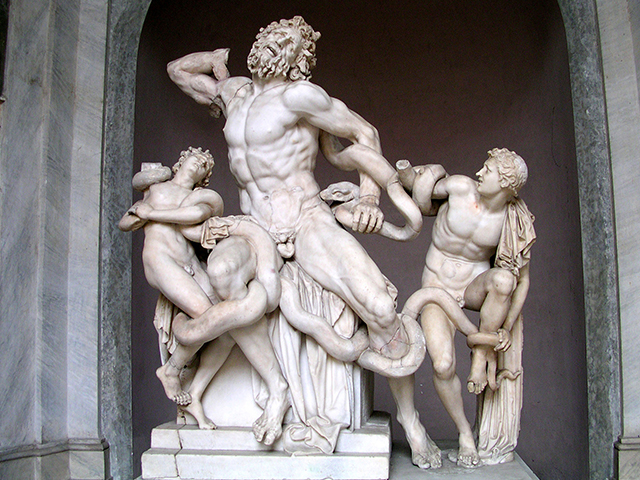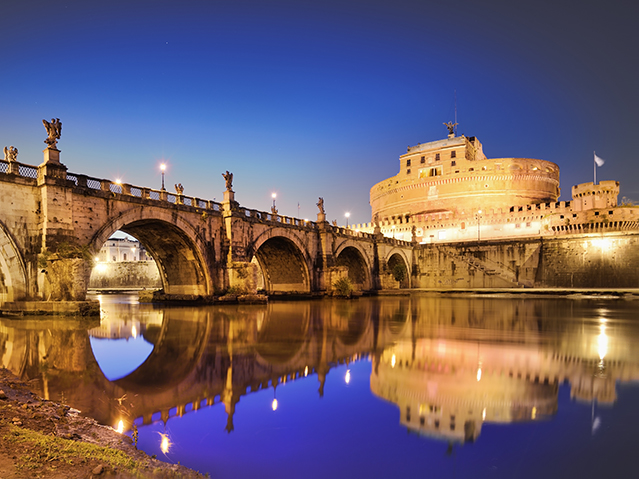What to do in Tolfa: 5 (+1) things you can't absolutely miss
Full of history, tasty food, clean air and more... Here's all you need to do and see in the Tolfa Mountains.Surrounded by green lawns and unique views, Tolfa is a small town between the hills of the Etruria, not far from Civitavecchia. A country rich in history, where you can breathe clean air and the food is good.
Attention, however, this is not a simple visit to Tolfa, but a real experience, which will pleasantly surprise you!
Here are the 5 things to see in Tolfa!
Old Town of Tolfa
The Old Town is very characteristic. A set of really unique alleys and small squares with breathtaking landscapes! We recommend you to start from Piazza Vittorio Veneto, also called Piazza Nuova. From this point, thanks to a wide balcony, it is possible to admire a good part of the Tolfa countryside and in days of clear sky you can see Rome and the Apennines. In the square there is also the Palazzo Comunale and the beautiful Villa Comunale. Before you take Via Roma, to your right, you can admire the Monument to the Fallen.
After travelling along Via Roma, you will arrive at Piazza Giacomo Matteotti, also known as Piazza Vecchia. Continuing, you will arrive at via Frangipani. At number 12 there is the Antico Palazzo dei Priori, today Palazzaccio, topped by the Clock Tower. Following the external walls of the medieval Tolfa you will pass under the arch of the Palazzo della Ragione. Until you reach the Fortress of Tolfa. Descending, you will arrive in front of the Collegiate Church of Sant Egidio and the oratory of the Crucifix.
At the top of the road, there is the Convent of the Capuchins. At the end of via Annibal Caro it is possible to visit the Church of the Madonna della Sughera with the Convent of the Augustinian Fathers. You will then go down Viale D'Italia and you will find yourself at the point of departure.
BOOK TOLFA TOUR (SHOPPING AND TASTING)

Balcony in Piazza Nuova (Tolfa)
Cultual Pole of Tolfa
Another unmissable stop in Tolfa is the Cultural Pole, including the Civic Archaeological Museum of Tolfa, the Municipal Library and the Historical Archives "Giuseppe Cola".
Initially, the place where today resides the Cultural Pole, was the site of the convent of the Augustinian Fathers annexed to the Sanctuary of S. Maria della Sughera. The construction began in the period in which Agostino Chigi was supervisor of the mines of alum, in the 16th century, where there was a miraculous apparition of the Virgin with the child at a shaft made of cork.
The name of the architect who designed the sanctuary is unknown. Some scholars think that it could be Baldassarre Peruzzi or Antonio da Sangallo the Younger.
In 1552 a crime was committed in the church, so it was forbidden to worship and it was closed for a short period. When it was reopened, some cracks appeared inside the chapel, so the Municipality of Tolfa established to expand and rebuild the church in its current form.
The Church and the convent stayed unaltered until 1799 when the French militias sacked the sanctuary. They were restored afterwards, between 1801 and 1825, but the convent slowly lost importance until during World War II it hosted the troops. Then, it became the seat of a brick factory and finally the workshop of a blacksmith until the beginning of the restoration work of 1997 and its transformation in today's Cultural Pole.
Inside the museum you can admire finds of Etruscan, Roman, Medieval and Modern origin. Specifically:
- Etruscan section: grave goods from the tombs of the nearby necropolis.
- Roman section: a selection of materials from the Roman villas of the area (villa di Pian dei Santi, villa di Poggio Smerdarolo) including tableware, vases, stuccoes, decorations and bricks
- Medieval and modern section: the materials from the abbey of Pietrangeli, including ceramics and sculptures with allegorical representations, from the abbey.
- A section of the exhibition is dedicated to the period of the discovery of the alum.
For further information, please visit the official site.

Inside courtyard of the Cultural Pole of Tolfa - Source: www.poloculturale.tolfa.it
The "Convento dei Cappuccini" in Tolfa
One of the must-see attractions in Tolfa is the historic Convento dei Cappuccini (Capuchin Convent), a place rich in history, spirituality, and breathtaking views.
Built in 1621, during the 17th century, the Convent of Tolfa was designed by the papal architect Friar Michele from Bergamo. Its construction was made possible thanks to the economic support derived from the thriving Alunite mines, which at the time were owned by the Reverenda Camera Apostolica.
This extraordinary place now offers a unique accommodation experience, where guests can stay in fully renovated rooms that still retain the authentic charm of the original 17th-century monastic cells. Visitors can also enjoy the spectacular terrace view and spend peaceful moments reading in the serene atmosphere of the convent’s library.
The Capuchin Convent is not only a historic landmark but also an ideal venue for special events such as weddings, first communions, confirmations, and other private celebrations. Additional services include horseback riding, forest therapy, e-bike routes, and trekking trails, perfect for those who love nature and adventure.
CLICK HERE TO BOOK
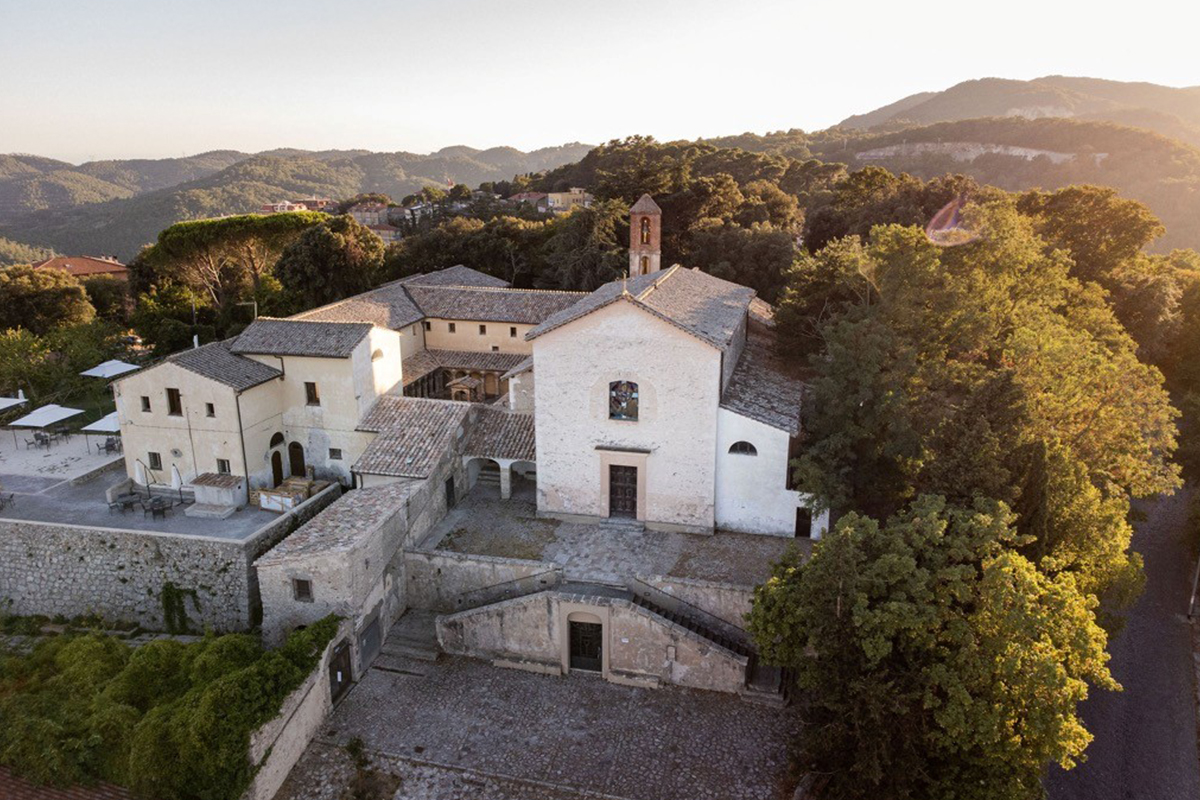
The Capuchin Convent in Tolfa
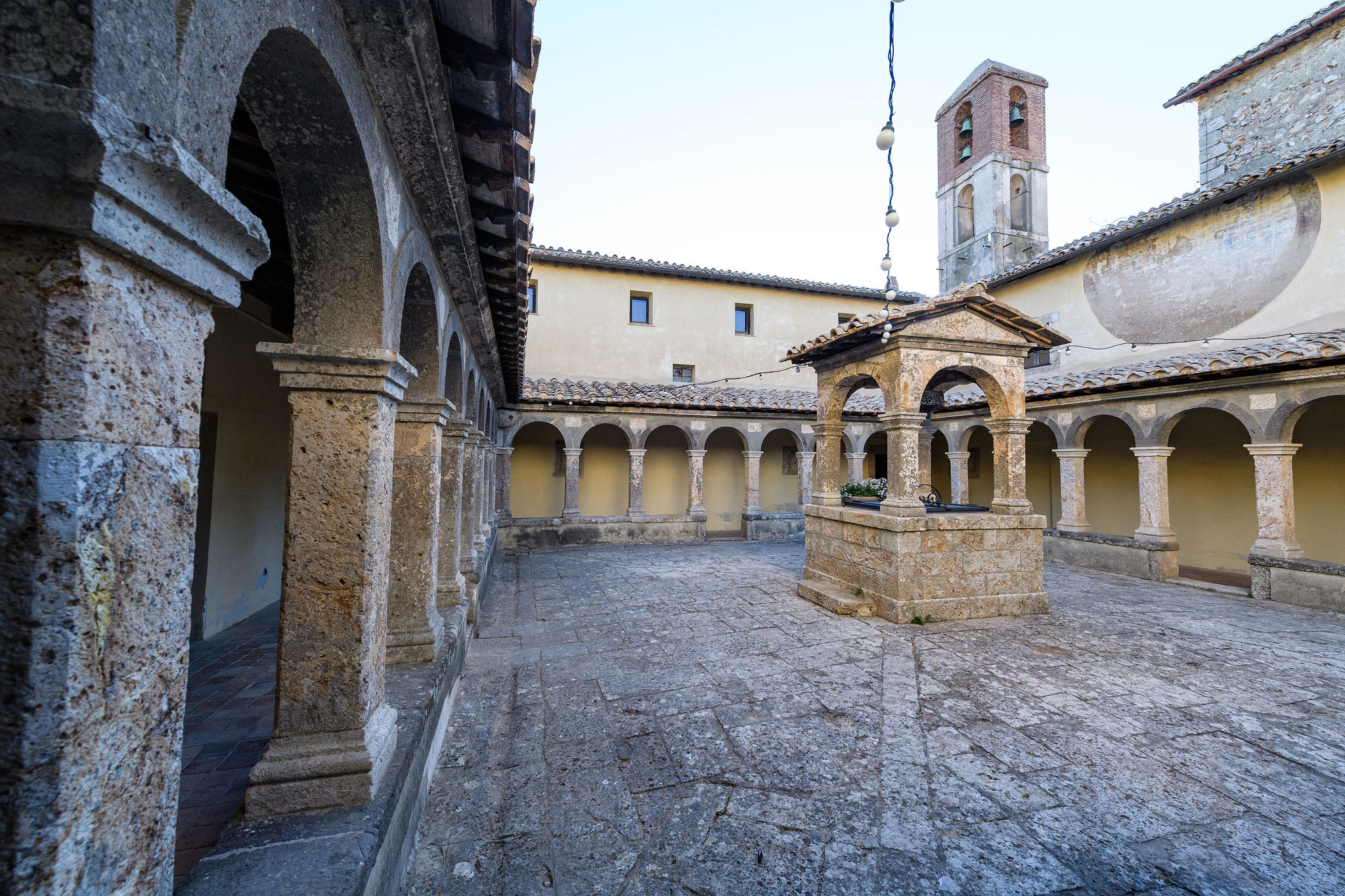
The Capuchin Convent in Tolfa
The Fortress of Tolfa
The path to reach the Fortress of Tolfa on top of the hill, completely uphill, is particularly evocative. Through the streets of the ancient village of Tolfa, you can reach pleasantly the Vetta, surrounded by lovely gardens of the houses in the vicinity.
Initially designed as a medieval castle, over time, thanks to its dominant position, the fortress took the function of both a control tower and a shooting range, hosting even a small cemetery during the XIX century.
The fortress even protected the people from the Napoleonic army. It even resisted the invasion by the French in 1798, representing the last stronghold until 14 March 1799 when it was definitively destroyed along with most of the medieval houses of the town. Enclosed between the ruins of the old castle, the tolfetani who rebelled to the French invaders were called brigands.
Close to the Castle, it is also possible to admire the small Church of the Madonna della Rocca, built with the purpose of protecting the people of Tolfa from above. It represents one of the most important symbols of Tolfa.
Between the church and the castle there is a small footpath, now covered by weeds, which leads to a plateau from which it is said that you can "even see the afterlife".
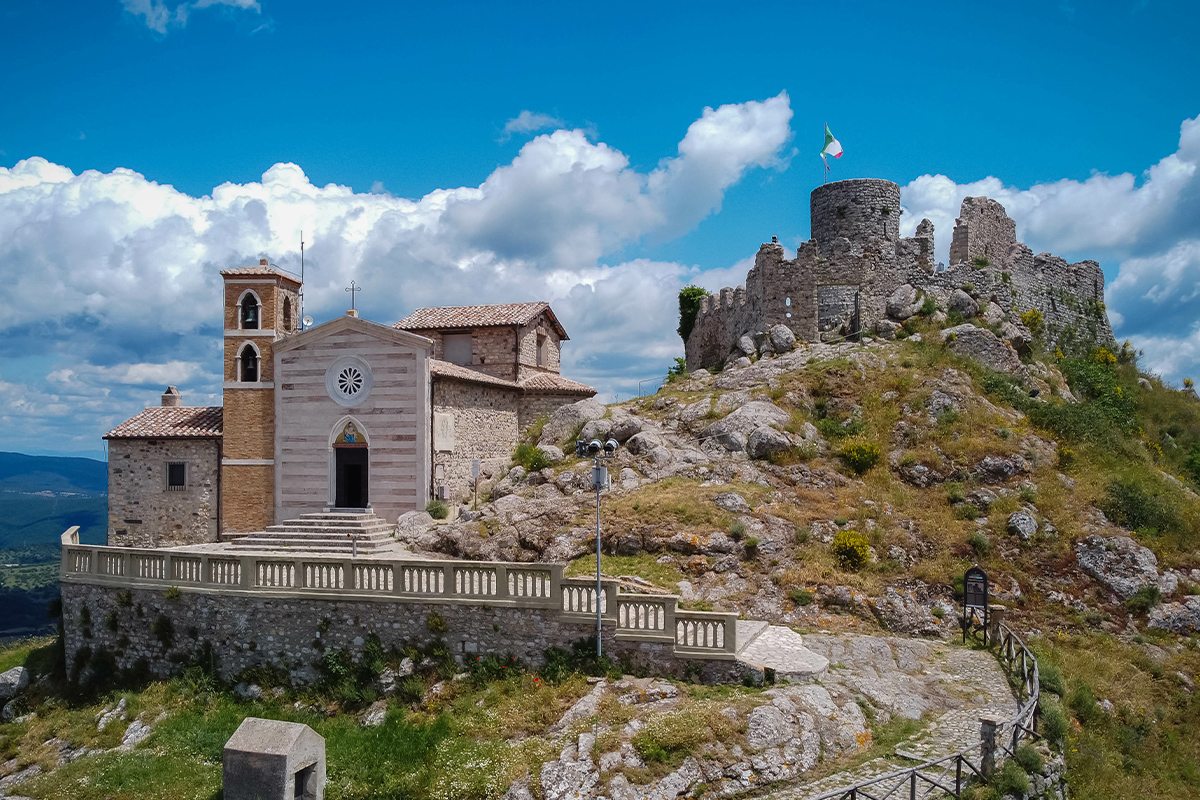
Views of the Fortress of Tolfa and Chiesa della Madonna
Abbey of Pietrangeli
Instead, if you want also to make a brief excursion, an easy trekking path, we advise you to visit the ruins of the Abbey of Pietrangeli.
The Abbey of Pietrangeli is located in the heart of the Monti della Tolfa. This is an old place and little known but very suggestive, which is well worth a visit. Once arrived you can also admire a splendid view over the valley of the Mignone.
The ruins can be reached through a simple and short path (an hour walk approximately), which begins at Tolfa and concludes at the "Grasceta of cavallari", an ancient Etruscan-Roman temple.
The Abbey of Pietrangeli was founded in the Carolingian period in a dominant position on the valley of the Mignone.
The remains of the Church are the ruins of a building with three apsed naves with three spans and four central and side columns. Outside you can find the ruins of a square bell tower. Near the abbey rises a small village, inhabited up to the 14th century, abandoned in circumstances not well clarified, perhaps because of the great plague that, in mid 14th century, swept across Europe.
Historic Buildings of Tolfa
There are two historic buildings of Tolfa that are worth visiting, dating back to the beginning of the 16th century.
Palazzo Panetti
From Piazza Vecchia, you can reach via Annibal Caro, lined with renaissance and baroque palaces, at number 37 stands Palazzo Panetti.
Inside you can admire an elegant inner courtyard with a octagonal cistern. Continuing along the track on the facade of the number 61 there is a newsstand in baroque style with an image of the Virgin.
Finally, in one of the appartments in the main floor there is a monumental fireplace.
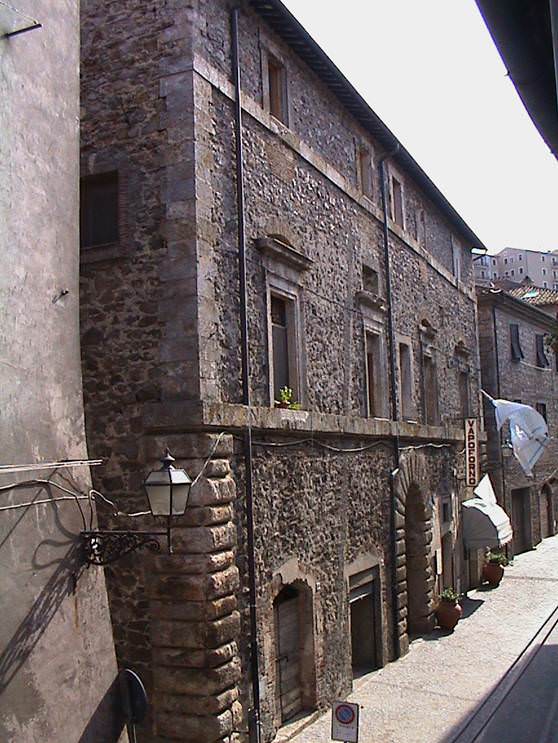
Façade of Palazzo Panetti - Source: www.poloculturale.tolfa.it

Courtyard of Palazzo Celli - Source: www.poloculturale.tolfa.it
Palazzo Celli
Descending from the rock, on the right you will arrive in via Costa Alta, where you will find Palazzo Celli (at the foot of the historic village). A true and proper "plunge into the past"!
The building is characterized by a very sober and linear architecture and inside there is a perfectly preserved courtyard.
There is also the cistern to collect rainwater typical of the renaissance palaces of Tolfa.
Useful information
- HOW TO GET THERE
By car
From Rome: drive along the Strada Statale Aurelia or the highway A12 (Rome - Civitavecchia) until the exit S. Severa, then take the provinciale to Tolfa (23 Km);From Civitavecchia: drive along the provinciale Braccianese Claudia towards Allumiere/Tolfa/Bracciano for about 20 Km until Tolfa.By bus
From Rome: take the Cotral bus (at Saxa Rubra station) in direzione Civitavecchia/Tolfa oppure in direzione Bracciano/Tolfa.From Civitavecchia: we recommend you to take the Cotral bus at Porta Tarquinia/Piazza Vittorio Emanuele/Stazione Ferroviaria towards Allumiere/Tolfa.From the Port of Civitavecchia we recommend you to get to our Infopoint at Largo della Pace next to the stop Porta Tarquinia, where you will find our friendly staff ready to welcome you.



 PORT MOBILITY CIVITAVECCHIA
PORT MOBILITY CIVITAVECCHIA








